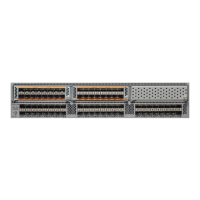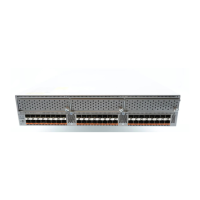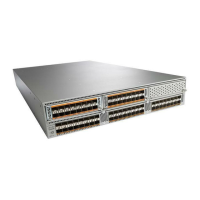Send feedback to nx5000-docfeedback@cisco.com
1-8
Cisco Nexus 5000 Series Switch CLI Software Configuration Guide
OL-16597-01
Chapter 1 Configuring RADIUS
Configuring RADIUS Servers
The following example shows how to configure a preshared keys for a RADIUS server:
switch# configure terminal
switch(config)# radius-server host 10.10.1.1 key 0 PlIjUhYg
switch(config)# exit
switch# show radius-server
switch# copy running-config startup-config
Configuring RADIUS Server Groups
You can specify one or more remote AAA servers for authentication using server groups. All members
of a group must belong to the RADIUS protocol. The servers are tried in the same order in which you
configure them.
You can configure these server groups at any time but they only take effect when you apply them to an
AAA service. For information on AAA services, see the “Remote AAA Services” section on page 1-3.
To configure radius server groups, perform this task:
:
The following example shows how to configure a RADIUS server group:
switch# configure terminal
Command Purpose
Step 1
switch# configure terminal
Enters configuration mode.
Step 2
switch(config)# aaa group server radius
group-name
Creates a RADIUS server group and enters the
RADIUS server group configuration submode for that
group. The group-name argument is a case-sensitive
alphanumeric string with a maximum length of 127
characters.
Step 3
switch(config-radius)# server
{ipv4-address |ipv6-address |
server-name}
Configures the RADIUS server as a member of the
RADIUS server group.
Tip If the specified RADIUS server is not found,
configure it using the radius-server host
command and retry this command.
Step 4
switch(config-radius)# deadtime minutes
(Optional) Configures the monitoring dead time. The
default is 0 minutes. The range is from 1 through 1440.
Note If the dead-time interval for a RADIUS server
group is greater than zero (0), that value takes
precedence over the global dead-time value.
See the example that shows how to configure
periodic RADIUS server monitoring.
Step 5
switch(config-radius)# exit
Exits configuration mode.
Step 6
switch(config) #show radius-server group
[GROUP-NAME]
(Optional) Displays the RADIUS server group
configuration.
Step 7
switch(config)# copy running-config
startup-config
(Optional) Copies the running configuration to the
startup configuration.

